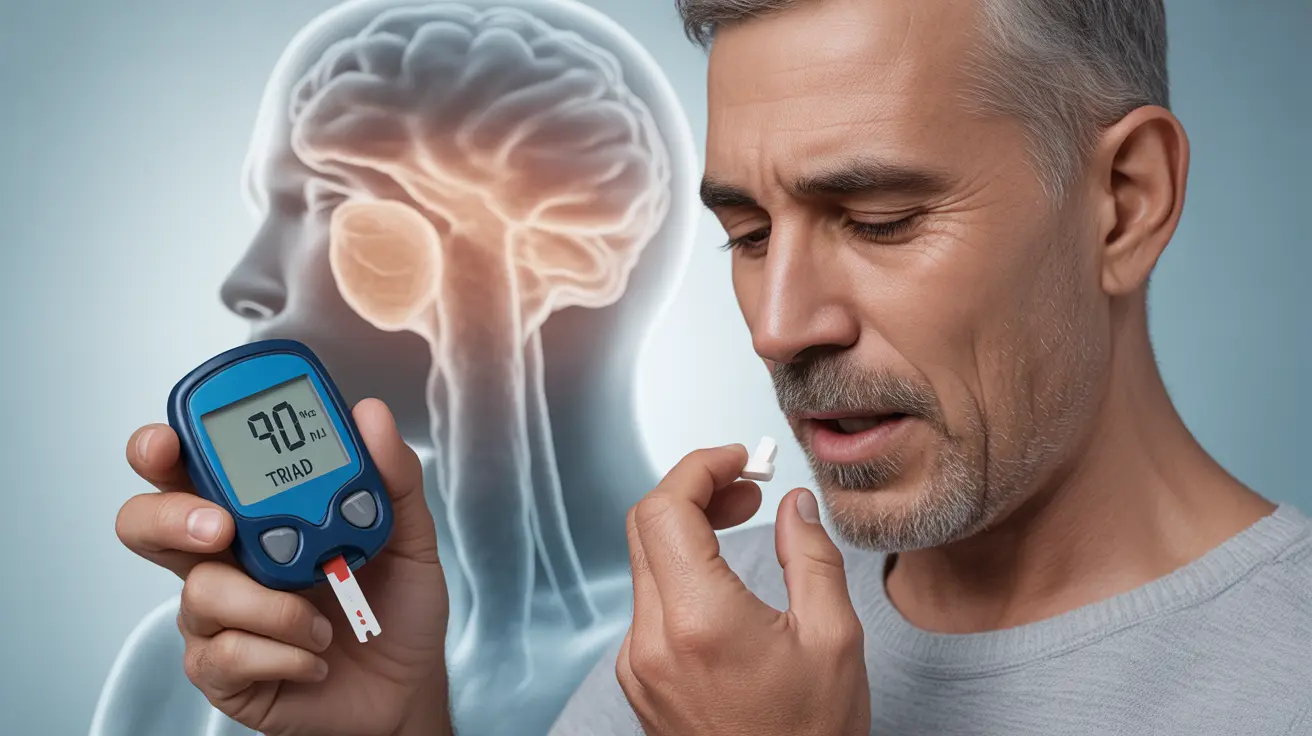When it comes to diagnosing true hypoglycemia (low blood sugar), healthcare providers rely on a time-tested set of criteria known as Whipple's triad. This diagnostic tool, established by Dr. Allen Whipple in 1938, remains the gold standard for confirming genuine hypoglycemic episodes and distinguishing them from other conditions with similar symptoms.
Understanding Whipple's triad is crucial for both medical professionals and patients, as it helps ensure accurate diagnosis and appropriate treatment of hypoglycemia. This comprehensive guide will explore how this diagnostic criteria works and why it's so important in modern medicine.
The Three Components of Whipple's Triad
Whipple's triad consists of three essential elements that must be present to confirm a diagnosis of true hypoglycemia:
- Symptoms consistent with low blood sugar
- Low blood glucose measurement at the time of symptoms
- Relief of symptoms when blood glucose is restored to normal
Recognizing Hypoglycemic Symptoms
The first component of Whipple's triad involves identifying specific symptoms that suggest low blood sugar. These symptoms typically include:
- Shakiness and trembling
- Sweating
- Rapid heartbeat
- Anxiety or nervousness
- Confusion or difficulty concentrating
- Blurred vision
- Weakness or fatigue
- Hunger
Documentation and Blood Glucose Testing
The second crucial element of Whipple's triad requires measuring blood glucose levels when symptoms occur. Healthcare providers typically consider blood glucose levels below 70 mg/dL (3.9 mmol/L) as hypoglycemic. This measurement must be documented using reliable glucose testing methods, usually performed in a clinical setting.
Symptom Resolution with Glucose Administration
The final component involves confirming that symptoms improve when blood glucose levels return to normal. This typically occurs after consuming carbohydrates or receiving glucose treatment. This resolution of symptoms helps confirm that the original symptoms were indeed caused by low blood sugar.
Clinical Applications and Importance
Whipple's triad serves several important purposes in clinical practice:
- Confirms genuine hypoglycemic episodes
- Helps identify underlying causes of hypoglycemia
- Guides treatment decisions
- Prevents misdiagnosis of other conditions with similar symptoms
Role in Diagnosing Insulinomas
Whipple's triad is particularly valuable in diagnosing insulinomas, which are rare pancreatic tumors that produce excess insulin. These tumors often cause recurrent hypoglycemic episodes that can be confirmed through careful application of Whipple's triad criteria.
Frequently Asked Questions
What is Whipple's triad and how is it used to diagnose true hypoglycemia? Whipple's triad is a set of three criteria used to confirm true hypoglycemia: documented low blood sugar symptoms, measured low blood glucose levels during symptoms, and relief of symptoms when blood sugar is restored to normal.
What symptoms indicate that I might be experiencing hypoglycemia related to Whipple's triad? Symptoms that may indicate hypoglycemia include shakiness, sweating, rapid heartbeat, anxiety, confusion, blurred vision, weakness, and hunger. These symptoms must be documented and accompanied by low blood glucose measurements to meet Whipple's triad criteria.
How does Whipple's triad help identify insulinomas as a cause of low blood sugar? Whipple's triad helps identify insulinomas by documenting the pattern of spontaneous hypoglycemia with corresponding symptoms and their resolution with glucose treatment, which is characteristic of insulin-producing tumors.
What tests are done to confirm hypoglycemia according to Whipple's triad criteria? Tests include blood glucose measurements during symptomatic episodes, often through supervised fasting tests, and documentation of symptom resolution with glucose administration. Additional specialized tests may be ordered based on initial findings.
How is hypoglycemia treated once Whipple's triad confirms the diagnosis? Treatment depends on the underlying cause but may include dietary modifications, medication adjustments, or surgical intervention for conditions like insulinomas. Immediate treatment involves glucose administration to restore normal blood sugar levels.




